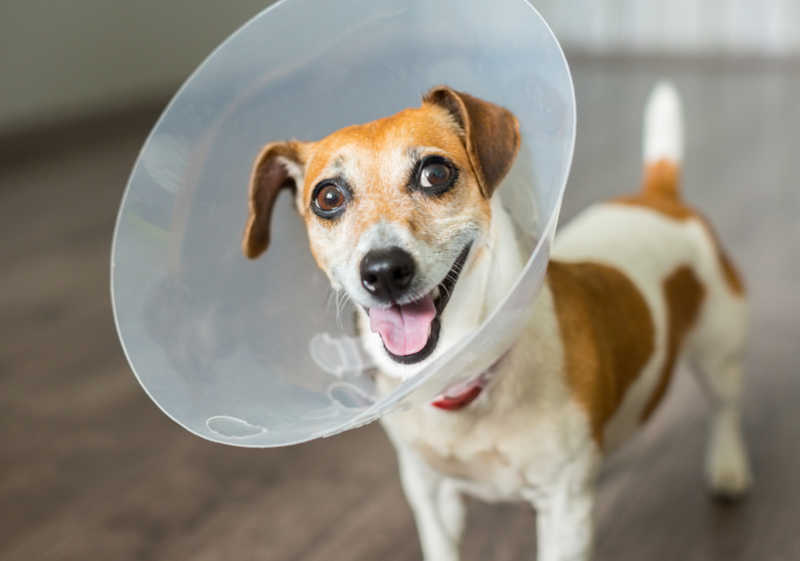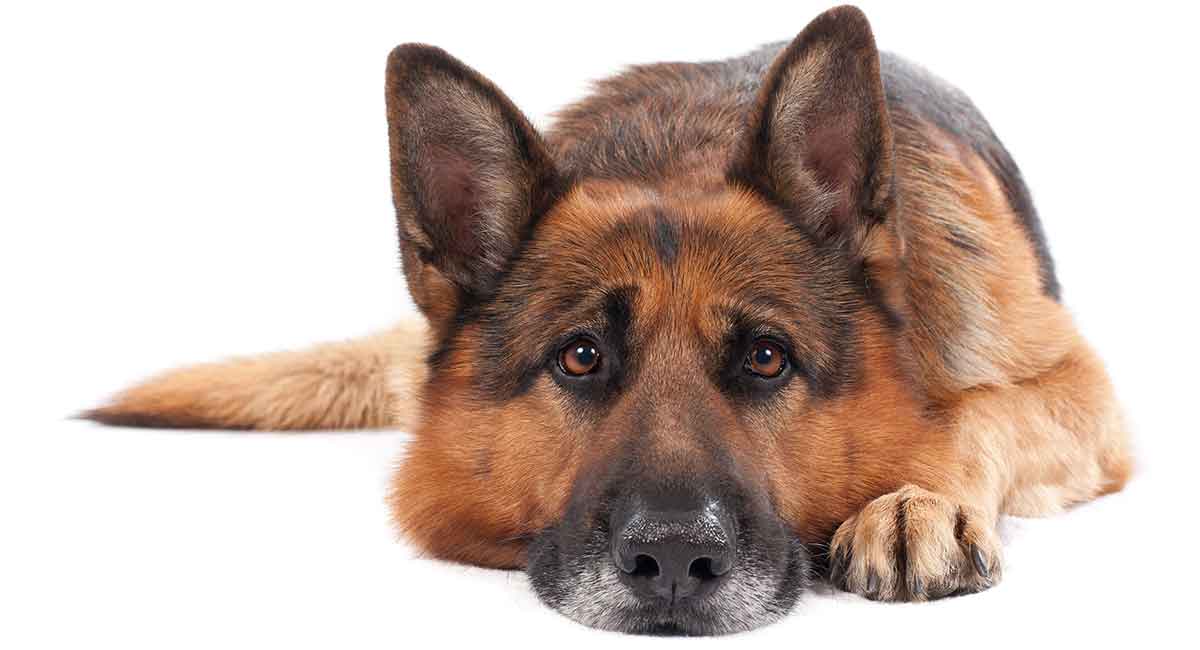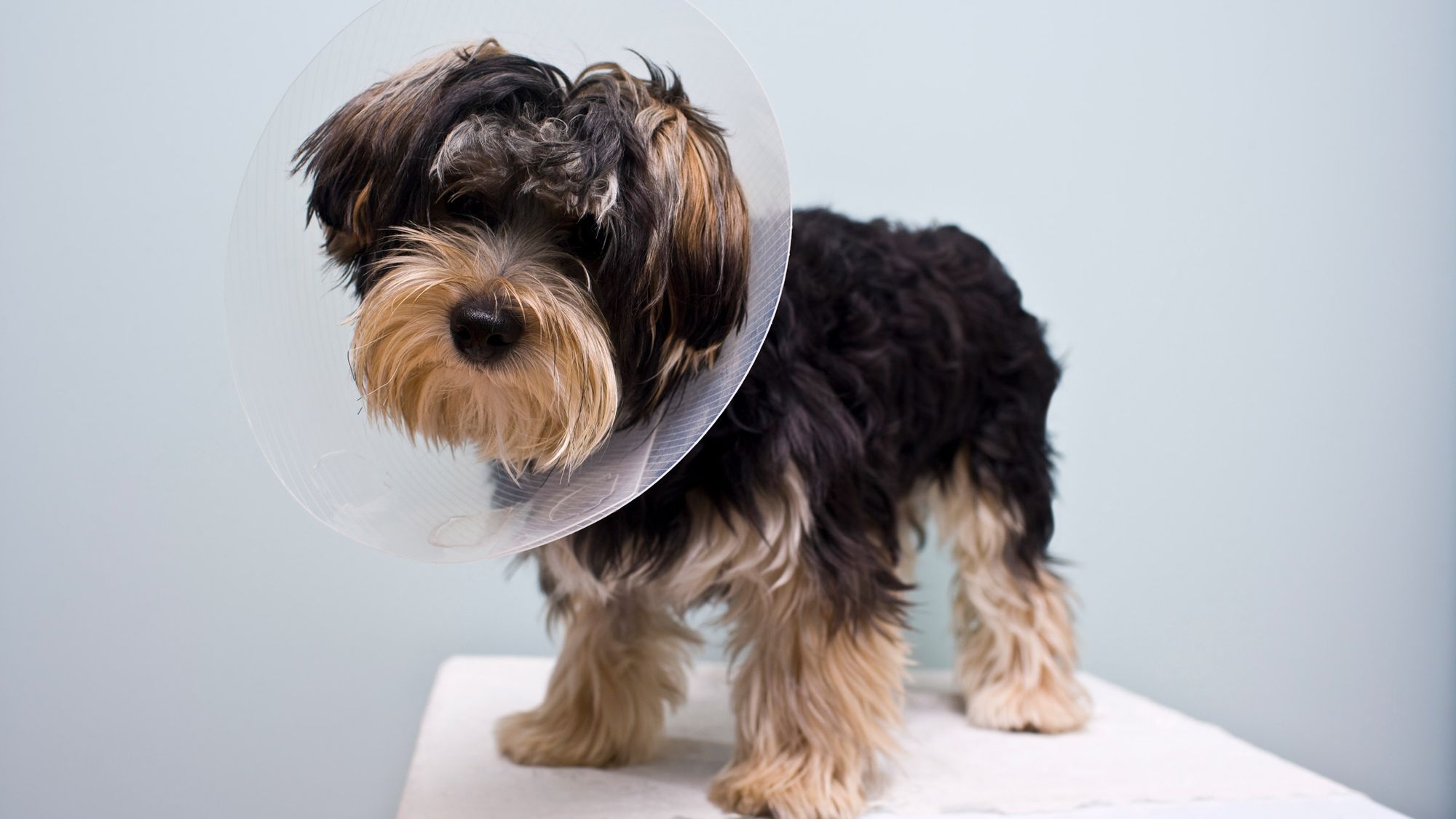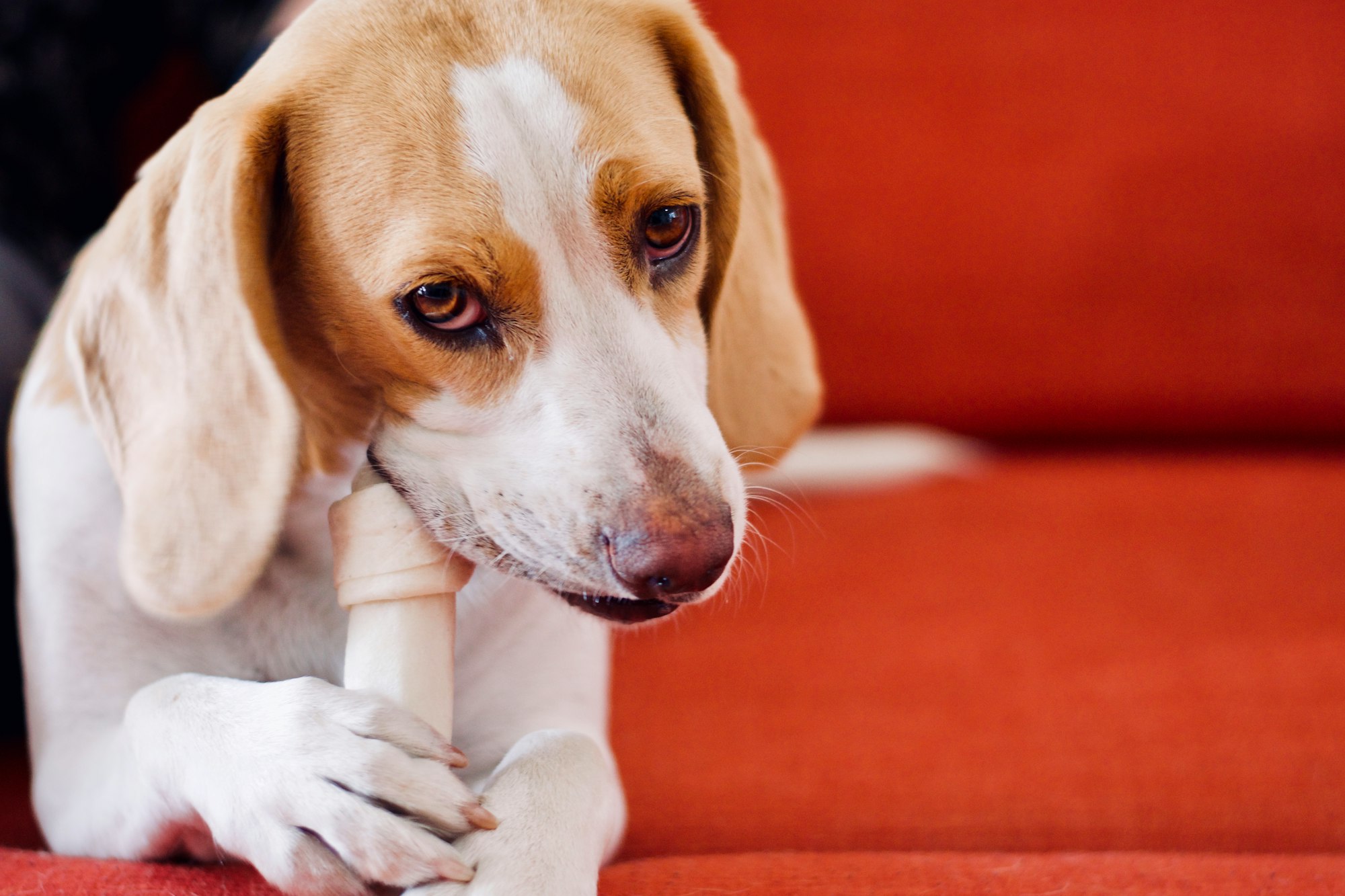Spaying a dog is a common surgical procedure performed to prevent unwanted pregnancies and provide various health benefits. It involves the removal of the female reproductive organs, specifically the ovaries and uterus.

After the surgery, it is essential to closely monitor your dog's recovery process for any warning signs or complications that may arise. This article will discuss the expected recovery signs after spaying a dog and the warning signs that require immediate veterinary attention. It will also provide tips for a smooth recovery after the procedure. By being aware of these signs and taking appropriate measures, you can ensure your dog's well-being and aid in a successful recovery.
What is Spaying?
Spaying, also known as ovariohysterectomy, is the surgical procedure used to remove the reproductive organs of female dogs. This common practice is performed under general anesthesia and involves the removal of the uterus and ovaries, ultimately eliminating the dog's ability to reproduce. Spaying offers several benefits such as preventing unwanted pregnancies, reducing the risk of certain reproductive diseases, and eliminating the messy and inconvenient heat cycle.
By preventing unwanted pregnancies, spaying helps control the dog population and reduces the number of stray dogs. Additionally, it eliminates the potential complications that can occur during pregnancy or birth. Spaying also lowers the risk of diseases like uterine infefections and mammary tumors, particularly when performed before the first heat cycle. By removing the source of these health issues, it contributes to a healthier and longer life for the dog.
Moreover, spaying eliminates the heat cycle, which can be both messy and inconvenient for both the dog and the owner. During this cycle, female dogs may attract male dogs and may attempt to escape or become agitated. Spaying helps reduce these behaviors and the associated risks.
It is important to carefully consider spaying as it is a permanent surgical procedure. Before making this decision, it is recommended to consult with a veterinarian who can provide specific information based on your dog's breed, age, and overall health.

What are the Expected Recovery Signs after Spaying a Dog?
Curious about what signs to expect after spaying your dog? Join me as we uncover the expected recovery signs in this section. We'll explore topics like lethargy, decreased appetite, swelling and redness, discharge, and changes in the incision site. By understanding these signs, you can ensure your furry friend's well-being post-surgery. So, let's dive in and discover the vital indicators of a smooth recovery for your beloved canine companion.
Lethargy
Lethargy is a common occurrence in dogs after they undergo spaying surgery. It is important to understand this expected recovery sign and monitor your dog's behavior closely during this time.
After spaying, your dog may exhibit lethargy, which is a state of low energy, tiredness, and lack of enthusiasm. This is a normal response to the surgery and anesthesia. Your dog's body needs time to heal and recover from the procedure.
During the recovery period, your dog may sleep more than usual and show less interest in activities. It is important to provide a calm and comfortable environment for your dog to rest and recuperate. Limit physical activity and avoid strenuous exercise during this time.
While lethargy is typically a normal part of the recovery process, it is essential to pay attention to any unusual symptoms or behaviors that may accompany it. If your dog shows signs of excessive lethargy, such as prolonged or extreme fatigue, or if other symptoms like loss of appetite, vomiting, or fever occur, it could indicate a complication.
If you notice any concerning signs, it is crucial to seek veterinary care promptly. A veterinarian will be able to evaluate your dog's condition and provide appropriate treatment if necessary.

Remember, each dog's recovery may vary, and some dogs may recover more quickly than others. By closely monitoring your dog's behavior and getting veterinary assistance if needed, you can help ensure a smooth recovery after spaying.
Decreased Appetite
When a dog is recovering from spaying, it is common for them to experience a decreased appetite. Here are some factors to consider regarding decreased appetite after spaying:
- Temporary effect: Decreased appetite is a common and temporary side effect of the surgery. It is important to remember that this is a normal part of the recovery process.
- Pain and discomfort: Dogs may experience some discomfort after spaying, which can contribute to a decreased appetite. The surgical site may be sensitive, and they may feel less inclined to eat.
- Anesthesia and medications: The use of anesthesia during the surgery can affect a dog's appetite for a short period. Pain medications prescribed post-surgery may also have an impact on their appetite.
- Stress and anxiety: The surgery and recovery period may cause stress and anxiety in dogs, which can lead to a loss of appetite. It is essential to provide a calm and comfortable environment to help alleviate these feelings.
To ensure a smooth recovery and help your dog regain their appetite, consider the following suggestions:
- Offer small, frequent meals: Instead of large meals, try offering smaller, more enticing portions throughout the day to encourage eating.
- Provide a comfortable eating area: Create a calm and comfortable space for your dog to eat. Avoid noisy or crowded environments that may further stress them.
- Offer palatable food: Try different types of foods to entice their appetite. Wet or canned food, warm meals, or adding a small amount of low-sodium broth to their food can make it more appealing.
- Monitor water intake: Ensure your dog stays hydrated. If they are not eating well, encourage them to drink water regularly.
- Consult your veterinarian: If your dog's appetite does not improve or worsens, it is important to consult your veterinarian for further guidance and evaluation.
Swelling and Redness
After spaying a dog, it is common for them to experience swelling and redness at the incision site, which are the two main symptoms to monitor during the healing process. This can be a normal part of the healing process, but it's important to monitor the swelling and redness to ensure there are no complications. Here are some important details to consider regarding swelling and redness:
- Swelling: Expect some swelling around the incision site immediately after the surgery. This swelling should gradually decrease in the first few days.
- Redness: It's normal for the incision site to be slightly red after the surgery. If the redness becomes more intense or spreads beyond the immediate area, it may indicate an infection.
- Monitoring: Keep a close eye on the swelling and redness. If the swelling continues to increase or the redness becomes more severe, it's important to contact your veterinarian for further evaluation.
- Cleanliness: Ensure that the incision site remains clean and dry. Avoid touching or irritating the area to prevent further inflammation.
- Medications: Your veterinarian may prescribe pain medication or antibiotics to help with the healing process. Follow their instructions carefully and administer any medications as directed.
By monitoring the swelling and redness after spaying your dog and taking appropriate measures, you can help ensure a smooth recovery and prevent any complications.
Discharge
After spaying a dog, it is important to closely monitor for any signs of discharge, as it can be an indication of infection or other complications. Follow these steps to properly address discharge:
- Observe the incision site for any unusual discharge. This may consist of fluid that resembles pus or is tinged with blood.
- If you happen to notice any discharge, gently cleanse the area with warm water and a mild antiseptic solution that your veterinarian recommends.
- Keep a vigilant eye on the color and texture of the discharge. In the initial days following the spaying procedure, normal discharge should be clear or slightly cloudy and gradually diminish.
- If the discharge becomes thick, has a foul odor, or is excessive, it could indicate an infection. It is crucial to promptly contact your veterinarian.
- Avoid attempting to treat the infection on your own using over-the-counter medications, as they can be harmful to your dog. Always seek professional veterinary care.
Remember, the presence of discharge is not necessarily abnormal after spaying a dog, but it necessitates close monitoring. Taking swift action and ensuring proper veterinary care are essential for a smooth recovery and to prevent any complications.
Incision Site Changes
Redness: Following the spaying procedure, it is common to observe some redness in the area surrounding the incision site. This is a natural part of the healing process, as the body increases blood flow to the area to aid in healing.
Swelling: Another expected change that can occur after spaying is swelling around the incision site. The body's normal response to surgery is to send fluid to the area, resulting in swelling. It is important to keep an eye on the swelling to ensure that it does not significantly increase.
Drainage: It is normal to expect some discharge from the incision site after spaying a dog. This discharge can be clear or slightly bloody. It is crucial to maintain cleanliness and dryness of the incision site to prevent infection.
Scabbing: During the healing process of the incision site, a scab may form. This scab acts as a protective barrier, safeguarding the wound against bacteria. It is important to avoid picking or scratching the scab as it can hinder the healing process.
Suture Changes: If your dog has sutures or staples, you might observe changes in their appearance as the incision site heals. The sutures may loosen or begin to dissolve. It is crucial to closely monitor the sutures and contact your veterinarian if you notice significant changes.
During the recovery phase, it is vital to closely observe the incision site for any alterations. Excessive redness, swelling, foul odor, or yellow or green discharge may indicate infection, and immediate veterinary care should be sought. If there is excessive bleeding or signs of an allergic reaction, such as difficulty breathing or swelling in the face or limbs, it is crucial to contact your veterinarian.
To ensure a smooth recovery after spaying, it is recommended to maintain cleanliness and dryness of the incision site, avoid strenuous activities, and prevent your dog from licking or scratching the area. Adhering to your veterinarian's post-operative instructions and providing appropriate pain management can also contribute to a successful recovery.

Remember, each dog's healing process may vary, so closely monitoring the incision site and contacting your veterinarian with any concerns or queries is essential. By attentively noticing changes in the incision site and providing necessary care, you can help your dog recover comfortably and rapidly.
Warning Signs after Spaying a Dog
After spaying a dog, it's important to be aware of the warning signs that may indicate an issue. Here are the warning signs after spaying a dog to look out for:
- Excessive Licking: If your dog is constantly licking the incision site, it could be a sign of infection or discomfort.
- Swelling or Redness: Any swelling or redness around the incision area should be monitored closely. These could be warning signs after spaying a dog of infection.
- Discharge: Unusual discharge, such as pus or blood, from the incision site should be addressed immediately.
- Lethargy: If your dog seems unusually tired and lacks energy after the surgery, it may be a warning sign after spaying a dog of complications.
- Loss of Appetite: A significant decrease in your dog's appetite can be a warning sign after spaying a dog of pain, discomfort, or other underlying issues.
- Increase in Body Temperature: If your dog's body temperature is elevated, it could indicate an infection in the surgical area.
- Vomiting or Diarrhea: Persistent vomiting or diarrhea can be warning signs after spaying a dog of post-surgery complications, and medical attention should be sought.
- Difficulty Urinating or Defecating: If your dog is struggling or unable to urinate or defecate, it may indicate a blockage or other complications.
- Excessive Coughing or Difficulty Breathing: These symptoms can be warning signs after spaying a dog of respiratory issues or lung complications following the surgery.
If you notice any of these warning signs after spaying a dog, it is crucial to contact your veterinarian immediately for proper evaluation and treatment.
What are the Signs of Infection?
When it comes to spaying a dog, it's important to be aware of the signs of infection to ensure the health and well-being of your furry friend. Here are some key signs to look out for:
- What are the Signs of Infection? Redness and swelling around the incision site: Infection can cause increased redness and swelling at the surgical site. Keep an eye on the area and contact your veterinarian if you notice any significant changes.
- What are the Signs of Infection? Discharge: If you observe any abnormal discharge, such as pus or excessive bleeding, it may indicate an infection. Immediate veterinary attention is necessary in such cases.
- What are the Signs of Infection? Foul odor: An unpleasant odor coming from the incision site could be a sign of infection. Pay attention to any unusual smells and consult your vet if you notice anything concerning.
- What are the Signs of Infection? Increased body temperature: Infection can cause the dog's body temperature to rise. Keep an eye on their temperature and contact your veterinarian if it exceeds the normal range.
- What are the Signs of Infection? Loss of appetite: A dog with an infection may show a decreased interest in food or refuse to eat altogether. This change in appetite should be closely monitored and reported to your vet.
If you spot any of these signs of infection in your dog following spaying, it's important to seek veterinary care promptly. Untreated infections can lead to further complications and discomfort for your pet.
Fact: According to the American Veterinary Medical Association, spaying a female dog not only prevents unwanted litters but also reduces the risk of certain diseases, such as uterine infections and mammary tumors.
What are the Signs of Hemorrhage?
Hemorrhage, or excessive bleeding, is a potential complication that can occur after spaying a dog. It is important to recognize the signs of hemorrhage to seek immediate veterinary care. Here are the signs to look out for:
- Bleeding: Excessive bleeding from the incision site is the most obvious sign of hemorrhage. If you notice a continuous flow of blood or bright red blood soaking through the bandage or bedding, it could indicate hemorrhage.
- Rapid pulse: Hemorrhage can lead to an increased heart rate in dogs. If you feel your dog's heartbeat and it seems faster than usual, it could be a sign of excessive bleeding.
- Pale gums: When bleeding is severe, it can lead to a lack of oxygen supply, resulting in pale gums. Check your dog's gums for a healthy pink color. If they appear pale or white, it is a cause for concern.
- Weakness and lethargy: Excessive bleeding can cause weakness and lethargy in dogs. If your dog seems unusually tired or has difficulty standing or walking, it could be a sign of hemorrhage.
- Rapid breathing: Dogs experiencing hemorrhage may have an increased respiratory rate. If you notice your dog panting heavily or breathing faster than normal, it could be a sign of excessive bleeding.
If you observe any of these signs of hemorrhage after spaying your dog, it is crucial to seek immediate veterinary care. Delaying treatment can lead to severe complications and endanger your dog's health.
What are the Signs of an Allergic Reaction?
When a dog is spayed, it is important to be aware of the signs of an allergic reaction occurring. One sign of an allergic reaction in dogs after spaying is the development of skin problems, which can include redness, swelling, and itchiness on the skin around the incision site. Another sign to look out for is difficulty breathing. If you notice that your dog is having trouble breathing or is breathing rapidly after spaying, it could indicate an allergic reaction.
Allergic reactions can also manifest as gastrointestinal symptoms, such as vomiting and diarrhea. If your dog starts experiencing these symptoms after being spayed, it may be an allergic reaction. Swelling of the face or limbs is another potential sign. If you observe any swelling in these areas, it is important to seek veterinary care immediately. Itchy or watery eyes can also be a symptom. If your dog's eyes appear red, swollen, or they are excessively tearing, it could indicate an allergic reaction. If you observe any of these signs after spaying your dog, it is crucial to consult a veterinarian promptly.
Allergic reactions can be serious and may require immediate medical attention. Your veterinarian will be able to diagnose and provide the necessary treatment to ensure a smooth recovery for your dog. Be sure to monitor your dog closely after the procedure to detect any signs of an allergic reaction.

When to Seek Veterinary Care?
Knowing when to seek veterinary care for your dog is crucial for their health and well-being. Here are some important factors to consider:
- When to Seek Veterinary Care? - If your dog experiences sudden changes in behavior such as aggression, lethargy, or extreme anxiety, it is important to seek veterinary care. These changes can indicate underlying health issues that require attention.
- When to Seek Veterinary Care? - If your dog refuses to eat for more than 24 hours, it could be a sign of a serious health problem. Consult with a veterinarian to determine the cause and necessary treatment.
- When to Seek Veterinary Care? - Labored breathing, persistent coughing, or wheezing should never be ignored. Seek immediate veterinary care to address any potential respiratory problems.
- When to Seek Veterinary Care? - If your dog experiences frequent accidents, struggles to urinate or defecate, or has blood in their urine or stool, it's important to consult with a veterinarian. These symptoms could indicate urinary tract infections or gastrointestinal issues.
- When to Seek Veterinary Care? - Frequent and prolonged episodes of vomiting or diarrhea can lead to dehydration and nutrient deficiencies. Veterinary care is essential to identify and treat the underlying cause.
- When to Seek Veterinary Care? - If your dog sustains an injury, such as a bite wound or a broken bone, seek immediate veterinary care. Prompt treatment can prevent further complications and aid in a faster recovery.
- When to Seek Veterinary Care? - If your dog experiences seizures or convulsions, it is vital to seek veterinary care as soon as possible. Seizures can have various causes, and a veterinarian can determine the appropriate course of action.
Remember, when in doubt, it is always better to seek veterinary care to ensure the health and well-being of your dog.
Tips for a Smooth Recovery after Spaying a Dog
Here are some helpful tips for ensuring a smooth recovery after spaying a dog:
- Make sure to set up a cozy, quiet resting place for your dog where they can relax and heal.
- Follow your veterinarian's instructions and administer any prescribed medications, such as pain relievers or antibiotics, as directed.
- Monitor the incision site for any signs of redness, swelling, or discharge. If you notice any abnormalities, contact your vet immediately.
- To prevent your dog from licking or biting the incision, you can use an Elizabethan collar or a specialized recovery suit.
- During the recovery period, limit your dog's activity and avoid strenuous exercise or rough play that could strain the incision site.
- Keep the incision site clean and dry. Do not give baths or allow your dog to swim until your vet approves.
- Consult your vet for specific dietary recommendations to provide a balanced diet that supports your dog's healing process.
Pro-tip: Remember to shower your dog with plenty of love and attention during their recovery. Gentle cuddles and reassurance can greatly contribute to their calmness and comfort as they heal.
Frequently Asked Questions
What are the warning signs of complications after spaying my dog?
Complications after spaying a dog can include infections, seromas, hernias, and spay incontinence. Signs of complications may include a red and hot incision site that oozes blood or pus, excessive licking or gnawing at the site, the presence of lumps or blisters filled with fluid near the incision, and the appearance of a lump protruding from the abdomen near the incision site.
What should I do if the incision site reopens after my dog's spay surgery?
If the incision site reopens, it is important to seek veterinary attention immediately. The risk of infection increases when the incision is open, and your dog may require additional treatment or sutures to close the wound properly.
How long does it take for a dog to make a full recovery after being spayed?
The healing process after spaying typically takes about two to three weeks. However, every dog is different, and some may require a longer recovery period. It is vital to monitor your dog's progress and consult with your veterinarian if you have any concerns about their recovery.
What activities should I limit to ensure proper spay recovery for my dog?
To promote healing, it is crucial to limit your dog's activities during the recovery period. Avoid allowing your dog to be too active, as it can tear sutures and open the wound. Additionally, refrain from bathing, swimming, and any other activities that may wet or irritate the incision site.
What are the signs of infection or complications after spaying my dog?
While rare, signs of infection or complications after spaying a dog may include a bad smell emanating from the incision site, redness, swelling, or excessive oozing of pus. If you notice any of these signs, it is important to seek veterinary attention promptly.
How can I keep my dog comfortable during the spay recovery process?
To keep your dog comfortable during spay recovery, ensure they have a quiet and small room to rest in. Use a cone or Elizabethan collar to prevent licking or gnawing at the incision site. Administer any prescribed pain medications as directed by your veterinarian. Additionally, provide a cozy and supportive dog bed to help ease any discomfort.
Visit the Off Leash blog at TryFi.com for more helpful articles about pet-parenting tips.
Would you like to learn more about TryFi.com? The Fi Dog Collar is a GPS tracking collar that not only tracks your dog's location, activity level, and sleep pattern, but also alerts you if your dog escapes. If your dog escapes, this is the fastest way to find him. Give the Fi Dog Collar a try today!

